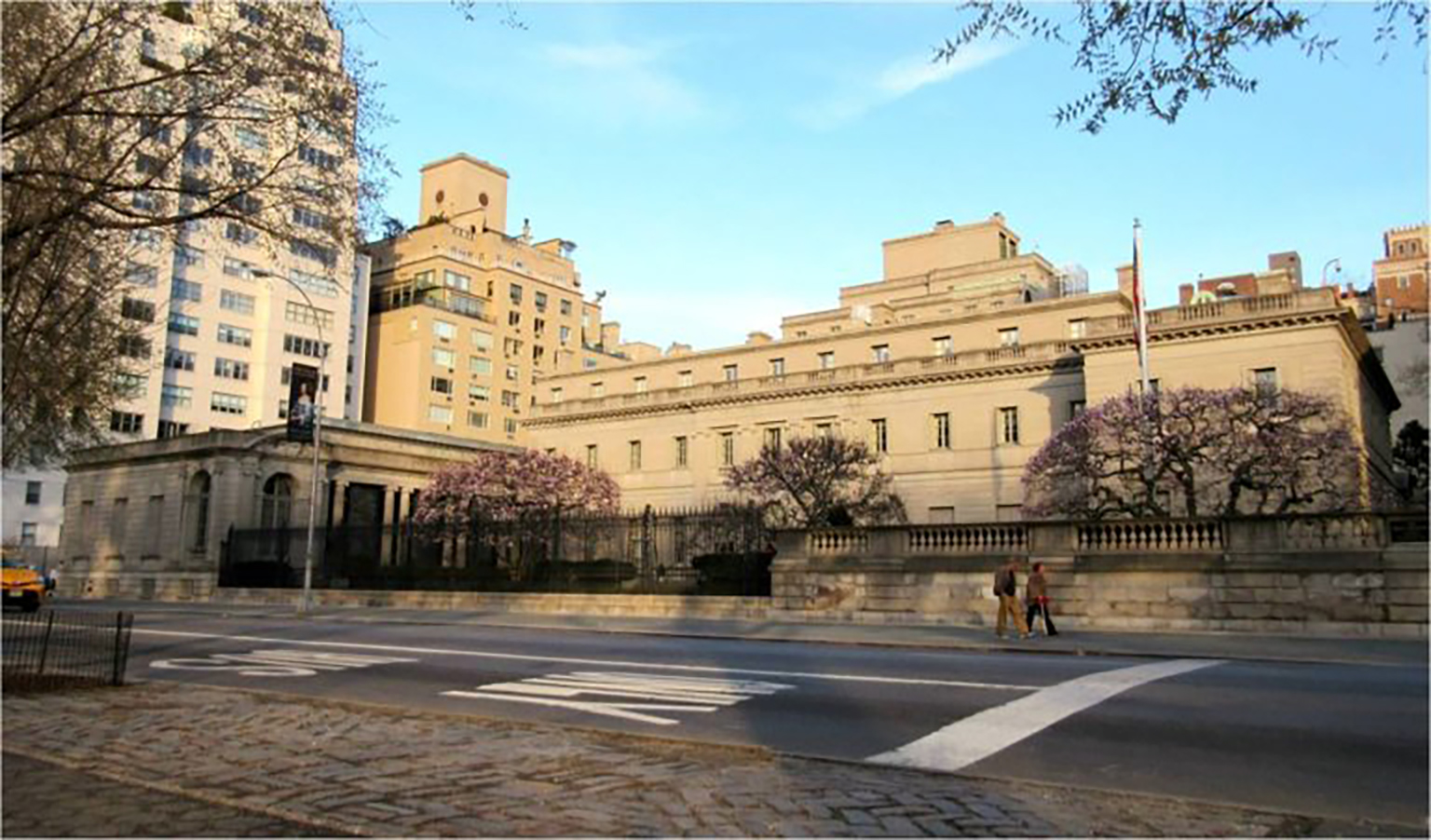NEW YORK TIMES: "Frick Museum Abandons Contested Renovation Plan"
by Robin Pogrebin
Facing a groundswell of opposition to a proposed renovation that would have eliminated a gated garden to make way for a six-story addition, the museum – long admired for its intimate scale – has decided to abandon those plans and start over from scratch.
“It just became clear to us that it wasn’t going to work,” said a museum official who spoke on the condition of anonymity because the board had not yet made the decision final with a vote.
“It won’t be the best plan, but we will go back and prioritize,” the official added. “There was just a number of voices out there and we heard them.”
With the proposed renovation, designed by Davis Brody Bond, the Frick, on East 70th Street in Manhattan, had sought to increase its exhibition space, open private upstairs rooms to the public and offer views of Central Park from a new roof garden.
But the plan faced strong criticism, much of it from a coalition, Unite to Save the Frick, that includes architects and designers like Robert A..M. Stern and Maya Lin, as well as three former commissioners of the New York City Landmarks Preservation Commission – Roberta Brandes Gratz, Stephen F. Byrns and Beverly Moss Spatt.
The coalition last fall produced evidence that the museum was going back on a promise made in its original landmark review about 40 years ago to make permanent the garden, designed by the British landscape architect Russell Page.
Last month, the Municipal Art Society also declared its intention to publicly oppose any expansion plan.
Facing potential “protracted legal battles” associated with pushing its plan forward, the museum decided to go another way, the museum official said. The Whitney Museum of American Art, formerly just five blocks away, fought for more than a year with Upper East Side residents and preservationists over building a nine-story tower behind a row of brownstones in a designated historic district and ultimately decided to move downtown to the new building that opened last month.
The project had also met with strong criticism in the press, including from Michael Kimmelman, the New York Times architecture critic, who called the addition “clumsy” and the garden “a civic gem.”
The new addition would have extended the building to the east – using space currently occupied by the gated garden that is generally not accessible to the public – and would have established a stronger connection from the museum to its art reference library on East 71st Street.
The extension would have given the Frick 50 percent more space for temporary exhibitions and 24 percent more for its permanent collection of some 1,200 works, by artists like Degas, El Greco, Manet and Renoir. The museum has said its current spaces are too small to accommodate popular exhibitions like the recent show of paintings from the The Hague, which had people lining up to see Vermeer’s “Girl With a Pearl Earring” and Fabritius’s “The Goldfinch.”
Opponents have countered that the Frick’s modest jewel-box interior is intrinsic to the institution’s importance.
The Frick was due to present the renovation plans for approval by the Landmarks Preservation Commission, since the museum is in a late Gilded Age mansion, which was designed by Thomas Hastings for the industrialist Henry Clay Frick. The project also would have required several variances.
Asked if city officials had alerted the museum that landmarks approval was unlikely, the official said only that there had been discussions with landmark officials about the plan. “This was a board decision,” the official said.
The collection, which opened to the public in 1935, added its entrance lobby in 1977 and three years ago converted an outdoor portico into indoor space. There have been three previous attempts to expand the museum in recent years – in 2001, 2005 and 2008.
The Frick’s board, which is scheduled to meet on Thursday, has yet to take a formal vote on the matter.
The Unite to Save the Frick coalition said in a statement that it was encouraged that the museum had chosen to consider the “many viable alternatives that would preserve the Russell Page Garden and the intimate house museum experience treasured by so many in New York City and around the world.”
Since the construction was not scheduled to begin until 2017, the Frick could conceivably maintain the same timeline, the official said, adding that the museum hoped to produce new plans by the end of the year.
Any new plan would seek to preserve the garden while retaining as many of the elements of the now scuttled plan as possible, the official said. “Realistically, it’s going to be compromised,” the official said. “Things will have to be pulled back.”

The Frick has yielded

